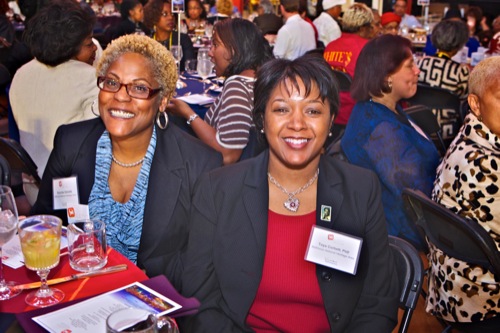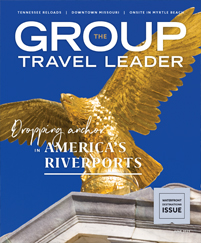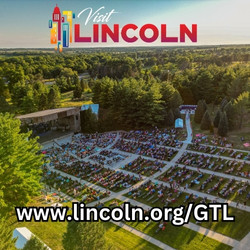 Courtesy Visit Baltimore
Courtesy Visit Baltimore
An eclectic mix of songs by Smoky Robinson, Marvin Gaye, Neil Diamond, Frankie Valli and the Temptations filled the air on a pleasant summer evening along Baltimore’s Inner Harbor.
I stumbled upon Charles Lee, of Harrisburg, Pa., belting out the songs with gusto in front of Harborplace, the retail, dining and entertainment complex along the Inner Harbor, as I began my latest trip to Baltimore.
After several previous visits, I was on a quest for attractions I had not yet seen in this city that seems to have unexpected finds around every corner.
Although Harborplace, the linchpin for the revitalization of downtown Balitmore, celebrated its 30th anniversary this year, I made it my first stop and was rewarded with the unexpected concert by Lee, one of several street performers who show up regularly during the summer at the small amphitheater at Harborplace.
The scene contrasted starkly to how Inner Harbor looked when it opened. Although the Maryland Science Center, the 19th-century warship USS Constellation and the World Trade Center, with its 27th-floor observation deck, had opened on the harbor by the mid-1970s, the area was still mostly deserted former piers.
“It was just old wharfs that people just drove through to get somewhere else,” said Nancy Hinds, vice president of public affairs for Visit Baltimore, the Greater Baltimore Convention and Visitors Authority.
Hinds said Harborplace, which was soon followed by the National Aquarium, other historic ships, more restaurants and a major hotel, “made people look at Baltimore as a tourist destination. We created a city center around the waterfront.”
Harborplace’s two glass-enclosed pavilions, one on each side of the amphitheater, look much as they did when they opened, although a newer shopping complex sits across the street.
“The two pavilions on the water have shops and restaurants,” said Carmel Locey, spokeswoman for Harborplace. “The Gallery is a four-story atrium-style shopping center that opened in 1987 across Pratt Street.”
The Gallery has several upscale stores, such as Brooks Brothers, Ann Taylor Loft, Coach and Godiva. The dining choices across the street include the city’s famous seafood, as you would expect, as well as steaks, tapas and sushi.
Second Renaissance
Hinds said a second “renaissance, so to speak” began about 15 years ago as more people moved downtown to live, creating a demand for additional and more varied restaurants and services.
“A lot of cities still want to see how we have capitalized on the waterfront,” said Hinds. “There is a lot of energy. We really are getting noticed.
“It’s ideal for groups. They can drop their customers off at the visitors center, which is right at Inner Harbor, and they can easily walk around the entire day. If they don’t feel like walking, they can hop on the Charm City Circulator.”
The new Circulator, which began this year, features more than 20 environmentally sensitive hybrid buses that offer free rides on three routes throughout downtown.
The National Aquarium and the Maryland Science Center have expanded over the years and are the two largest attractions at Inner Harbor.
Considered one of the top children’s museums in the country, the science center has permanent halls about dinosaurs and earth sciences, a planetarium and an Imax theater.
Distinctive look
Across the harbor, the three dramatic buildings of the National Aquarium sit on two of the former piers, adding a distinctive signature look to Inner Harbor.
I took a swing through the original pyramid-shaped main building now known as the Pier 3 Pavilion, which has five levels of exhibits that showcase Maryland’s diverse aquatic life, the Atlantic sea cliffs, an undersea kelp forest, a re-created rain forest, the Atlantic coral reef and one of the largest stingray collections in the country.
However, I was most interested in the Glass Pavilion, which I had not visited since it opened in December 2005. The dramatic addition provides a realistic walkthrough of a typical northern Australia river gorge, the only one of its kind in the United States.
“Look up in the rocky walls and in among the branches,” advises a motion-activated recording as you ride an escalator to the exhibit’s entrance. “You may see lizards and even flying mammals.”
After walking past a 35-foot waterfall that can be seen from outside through a large glass wall, I entered the main exhibit, where I did indeed see free-flying birds and scampering lizards, but not a flying mammal, in its realistic re-created river gorge.
More than 1,800 animals representing 120 species are on display in the exhibit, among them freshwater crocodiles — don’t worry, they are in enclosed exhibits — turtles and fish.
I also checked out the new jellyfish exhibit in the Pier 4 Pavilion, reached by a walkway over a harbor inlet. “Jellies Invasion: Oceans Out of Balance,” which opened on Memorial Day 2009, is on an extended run and is expected to be at the aquarium for another two or three years.
The exhibit is very informative about jellies, which live in every ocean, explaining not only about threats to them, but also about the threat that overpopulation of jellies poses to native fishes.
There are tanks with examples of up to nine different species of these fascinating translucent animals with names such as blue blubber jelly, Leidy’s comb jelly, spotted lagoon jelly, upside-down jelly and egg yolk jelly.
Powerful presence
Another major player in the revitalization of Inner Harbor has been the locally based Cordish Company, a development company that took over the Power Plant, a large former electric generating plant, and made it a shopping, dining and entertainment center, marked by the large Hard Rock Cafe guitar on one of its smokestacks.
“For a long time, we couldn’t get anybody to go beyond the aquarium,” said Hinds. “When Cordish took over the Power Plant and put in a Hard Rock and an ESPN Zone, it became a big draw. It got people going past the aquarium.”
Although the ESPN Zone, the company’s first, is now closed, the Power Plant is still a vibrant spot with other restaurants, shops and a large Barnes and Noble bookstore.
That has been followed by the development of Power Plant Live! just a block away, with restaurants and nightclubs around a common plaza with outdoor seating and entertainment.
Cultural icons
One of the most fascinating new places I visited was Geppi’s Entertainment Museum, which is jam-packed with nearly 6,000 pop culture artifacts covering more than 250 years, among them comics, toys, dolls and games.
“It chronicles American culture through history,” said Kevin Brennen, a guide at the museum. “It shows the diversity of everything from fashion to Ovaltine.”
Geppi’s is located above the well-done Sports Legends Museum on the second floor of the historic Camden Station at Camden Yards, adjacent to the Baltimore Orioles ballpark, an easy walk from Inner Harbor.
The museum’s long hallway is lined from floor to ceiling with movie posters, comics and advertisements. The eight galleries, all in separate rooms, are divided chronologically from the 1700s to the present, except for the opening gallery, which is dubbed a “museum within a museum.”
That gallery traces the history of comics and has an extensive collection of comic books and comic strips dating from Colonial times lining the walls.
There is a copy of the first Superman comic book from June 1938 and examples of everything from “Crime Files” and “Crime Detectives” to the first Disney comic book, with Donald Duck on the cover.
Computer terminals let you leaf through e-pub versions of historic comic books, such as that first Superman comic book, and learn about the often controversial history of comics.
African-American history
Finally, I hopped a water taxi to Fell’s Point, where director of events Marsha Reeves Jews showed me through the Frederick Douglass-Isaac Myers Maritime Park.
The museum, located in a former sugar warehouse near the site of the first African American-owned and -operated shipyard in the United States, tells African-American maritime and local history through the stories of Douglass and Myers, who both worked as caulkers on the Baltimore docks.
“The museum celebrates the lives of Douglass and Myers and their joint experiences of being on the docks, which were obviously different — Douglass as a slave, Myers as a free man,” said Jews.
The museum uses a combination of artifacts, videos and hands-on activities, such as caulking the sides of a 19th-century wooden ship and hoisting a barrel onboard a ship.
Douglass bought his first book just a block from the museum site and escaped to freedom as a young man. Myers, who was born free, joined 14 other black entrepreneurs in 1866 to form the Chesapeake Marine Railway and Dry Dock Co.
Adjacent to the museum is a boatbuilding shop where visitors can watch students in the museum’s living classroom program build and repair boats.
For more on Baltimore:
Baltimore’s inner self
Waterborne perspective
Raise the flag











